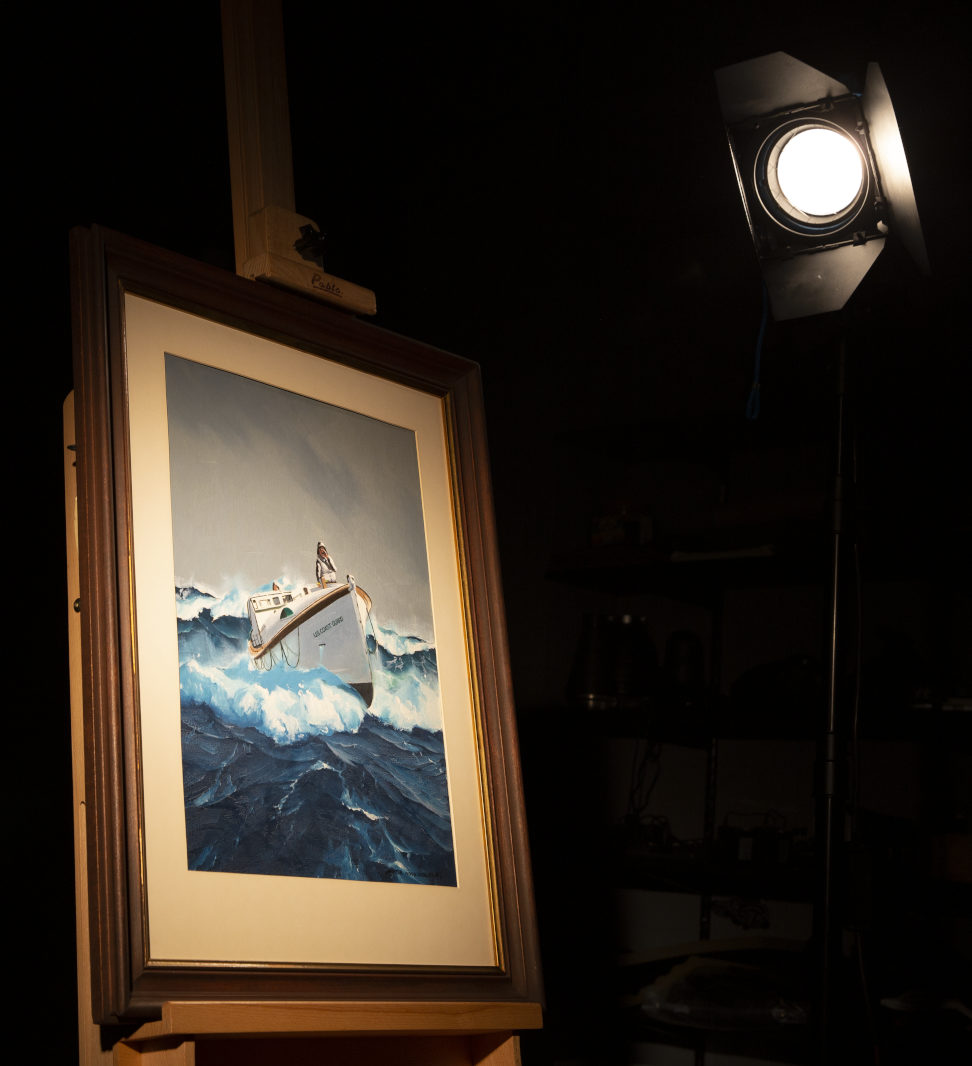
The world crashes back into being as you blink hard, the salt water stings your eyes, obscuring your vision. The menacing water fills your lungs as you gasp for air. Rough waves slosh around you, they roar and toss you about.
Their power would be paralyzing if you stopped to think about it in this terrifying moment, but before you succumb to the water’s might, you see a form moving out of the spray towards you. There’s someone there, you think you can hear them shouting.
But what’s happened? Where are you?
That’s right, the storm, that wave,
and then…
Color… and something more
Color can be deceptive. It has a curious way of subconsciously influencing how we feel about things. There’s an entire field of study based on this called color psychology. Blue is supposed to be the color of tranquility, peace, and trust. In fact, it was the bright blues of the waves and the foamy white of their caps which drew me to this piece initially. I was scrolling through the catalog looking for Coast Guard related objects, and then I saw this!
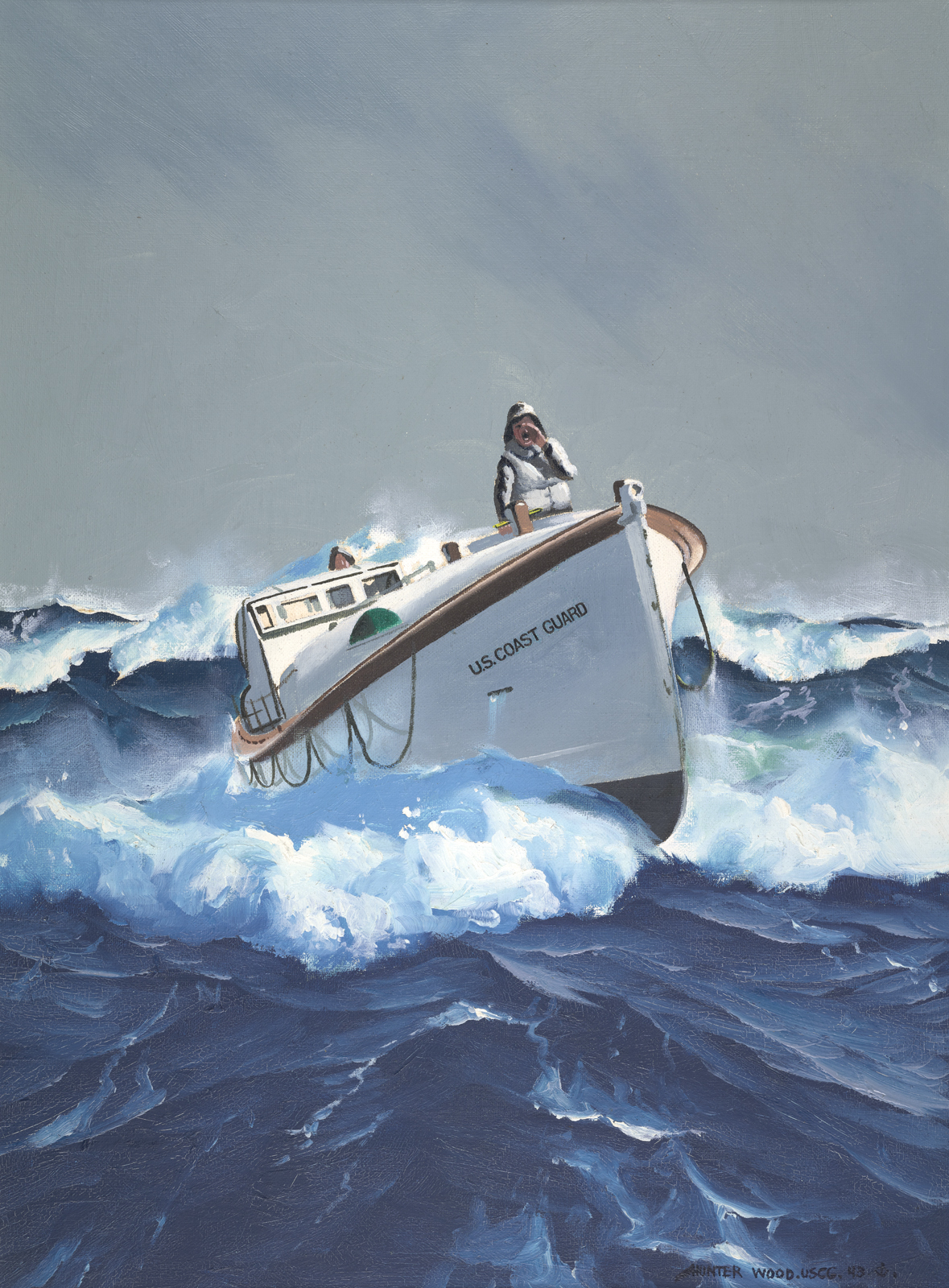
“Unidentified Coast Guard Vessel” by Hunter Wood is a 1943 oil on canvas. It was exciting – crisp, and idyllic in an adventurous way, showing the Coast Guard in action. Their clean, well kept boat breaking heroically through the daunting wave, the guardsman on the bow.
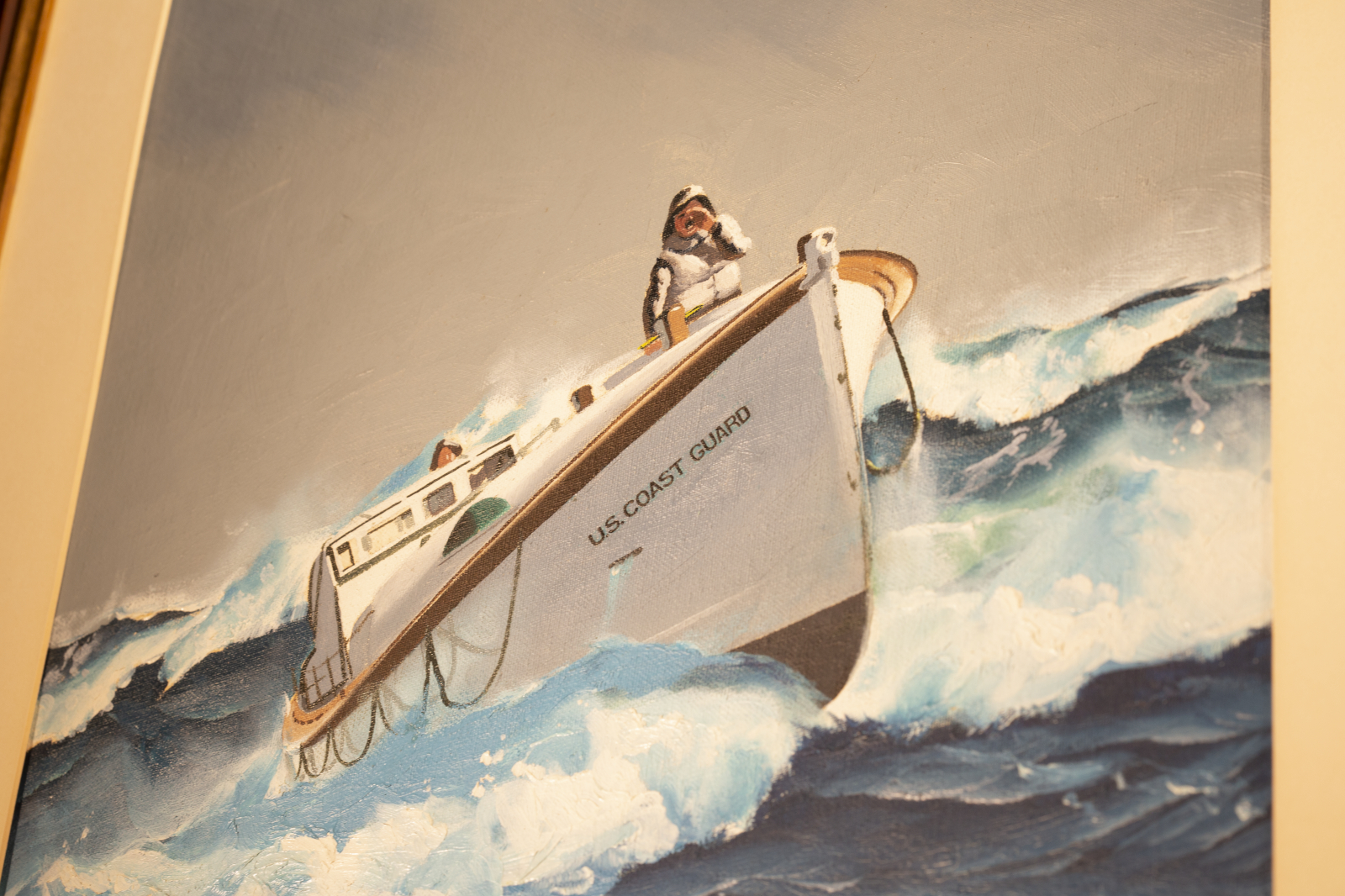
I didn’t think much of it at first other than that I liked it. But it seemed to stay there in the back of my head. There was something about it. That “something” kept nagging me as if to tell me that this piece isn’t all I thought it was and that “something” was right. It was the color – the negative side of the color blue.
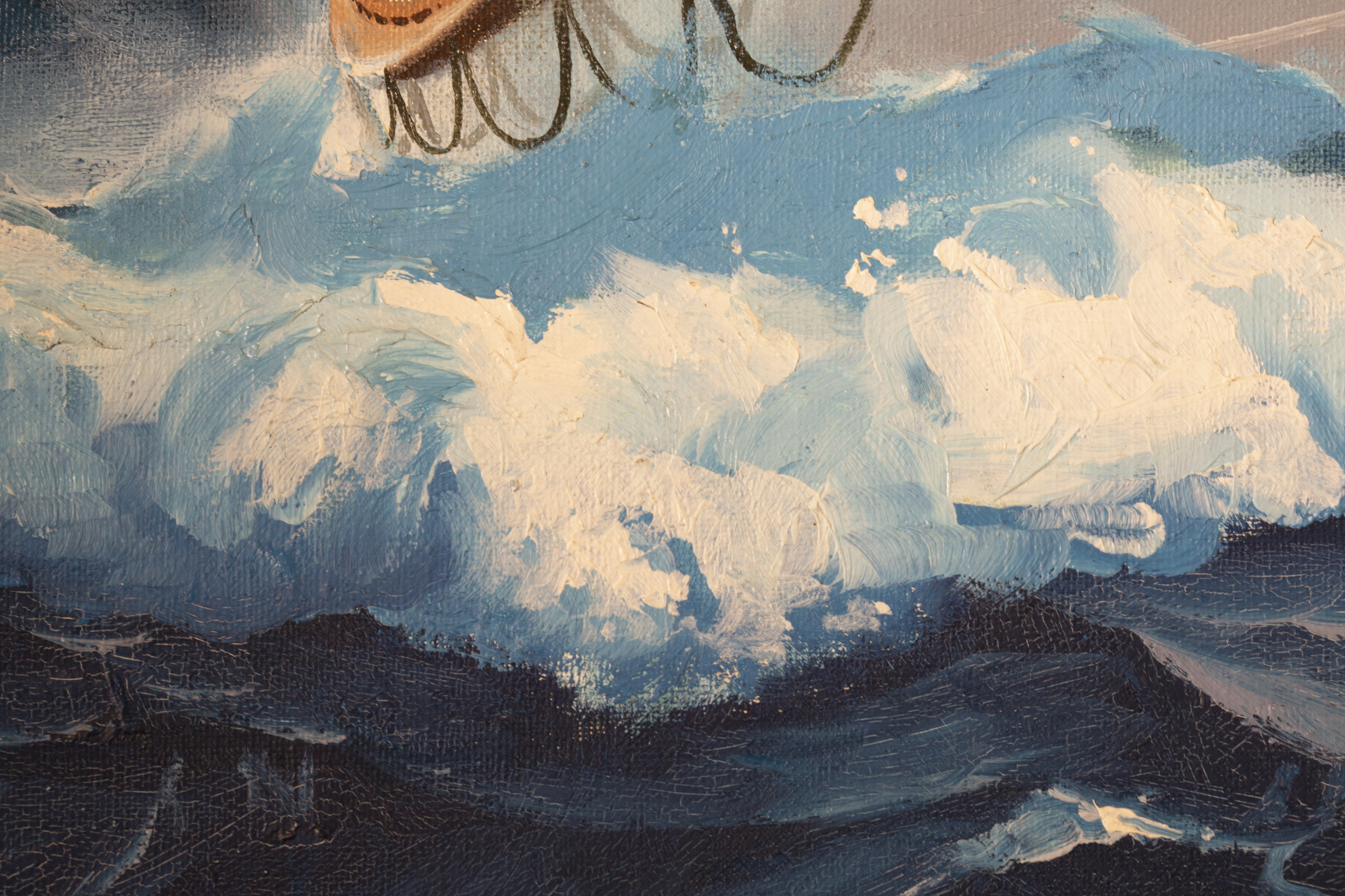
The duplicity of color
Below the trusting tranquility of the surface there lies a cold sadness. But it isn’t just the color, it’s the perspective, too. This is a rescue scene – sure I knew that, but the low angle of the piece mixed with that icy blue of the water created the inescapable feeling that –
the one in need of rescue –
was me.
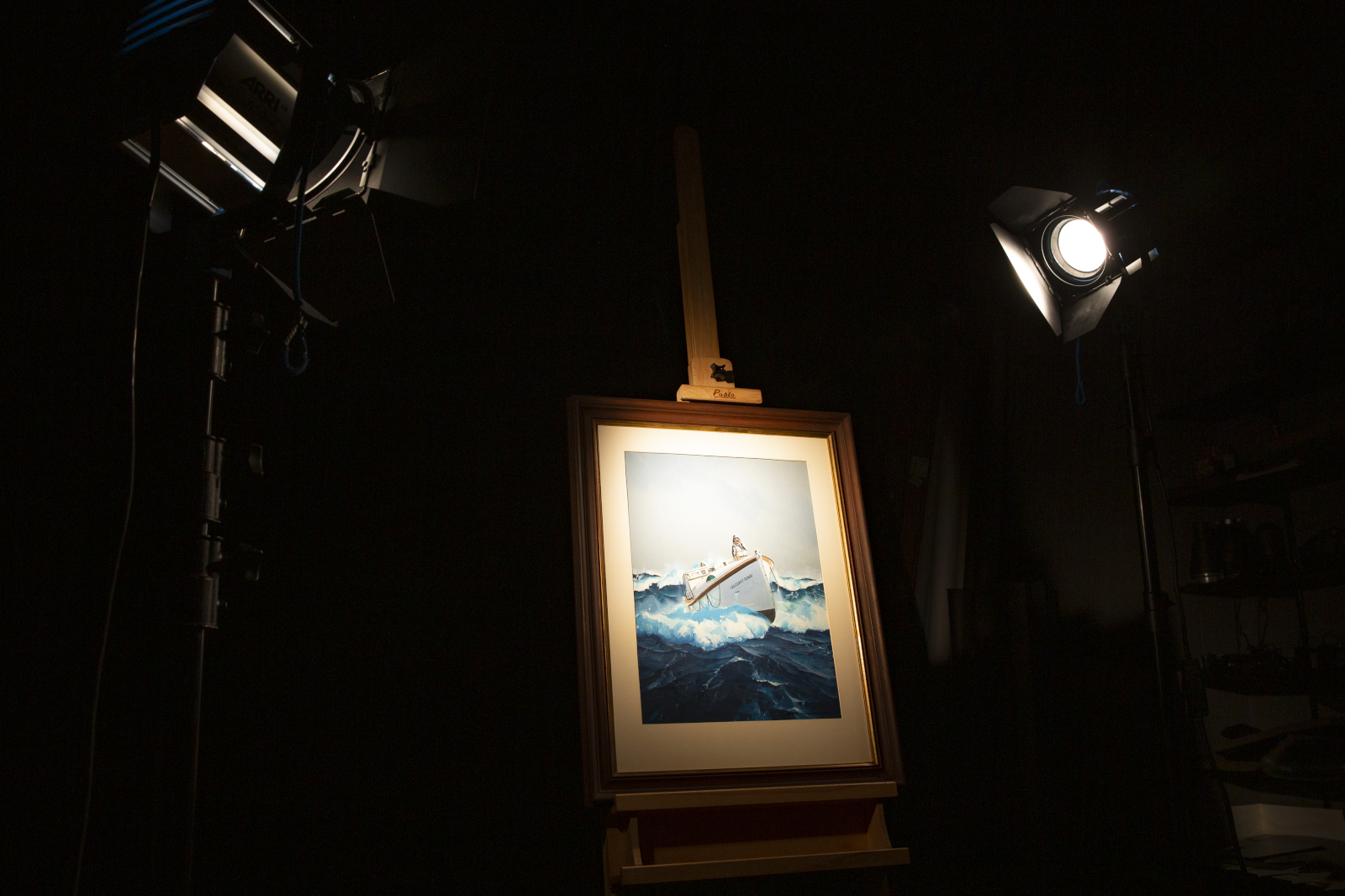
In the same way that this piece morphed in my head, it seems to change before our eyes the longer we look. What initially seemed like a heroic scene documenting the service of the Coast Guard, deepened into a much stronger awakening. It became a work in which the artist intentionally placed the viewer at a point of vulnerability.
The water swirls before the breaking waves as if there’s a suction that could pull us down at any moment. The greenish-gray-blue of the sky darkens and feels even eerier as it clashes dissonantly with the electric blue of the waves. That same blue chills you to your core. The artist knows the duplicity of that color blue, just as he knows the duplicitous nature of the waves.
The life of the Artist
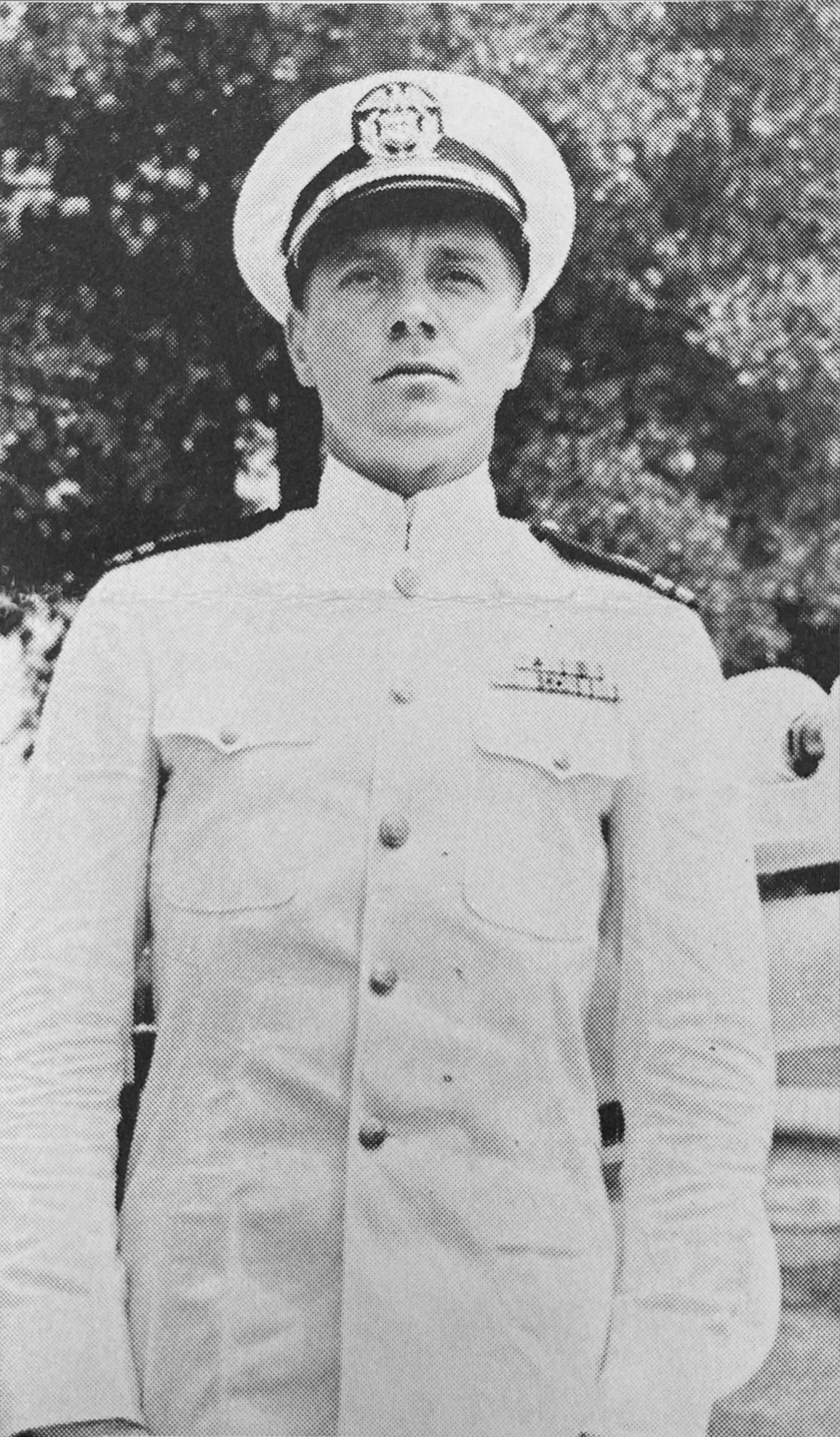
The artist, Hunter Wood, was the definition of a Mariner. Son of the maritime artist, Worden Wood, and great-grandson of John L. Worden who commanded USS Monitor during the Battle of Hampton Roads (upon further research and continued conversations with the Wood family, it has been determined that Hunter Wood (1908-1948) was not the great-grandson of John Lorimer Worden, but was instead related through marriage). His life was always maritime-focused, even as a young man. Wood was trained in the New York Merchant Marine Academy on board the school ship Newport.
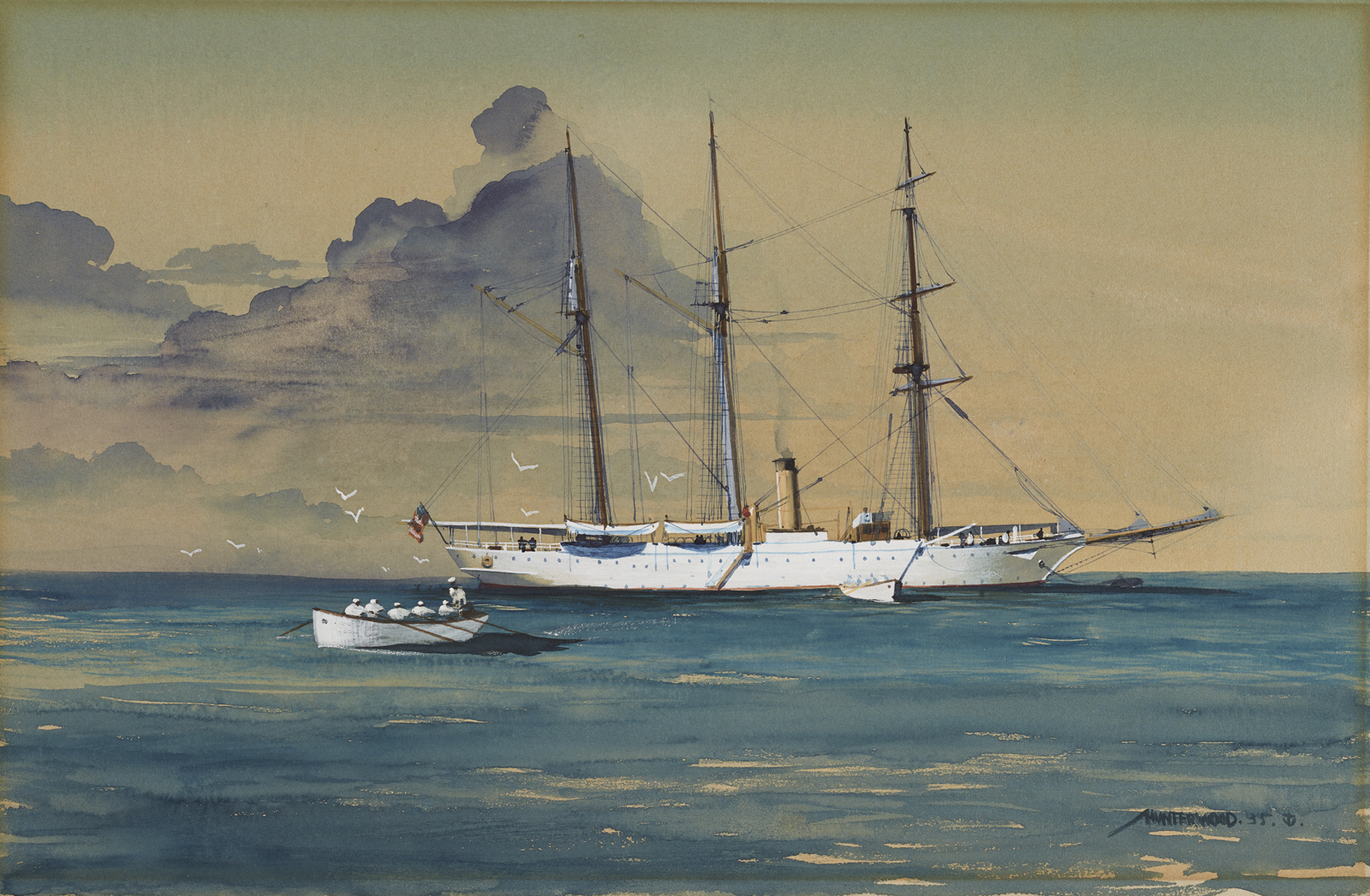
He worked in a variety of maritime or art related fields, and then later served in the Coast Guard, doubling as a war artist during the second World War. We can see from the year and Wood’s signature, denoted with “USCG” and an anchor, that this work was from his time in the Coast Guard.
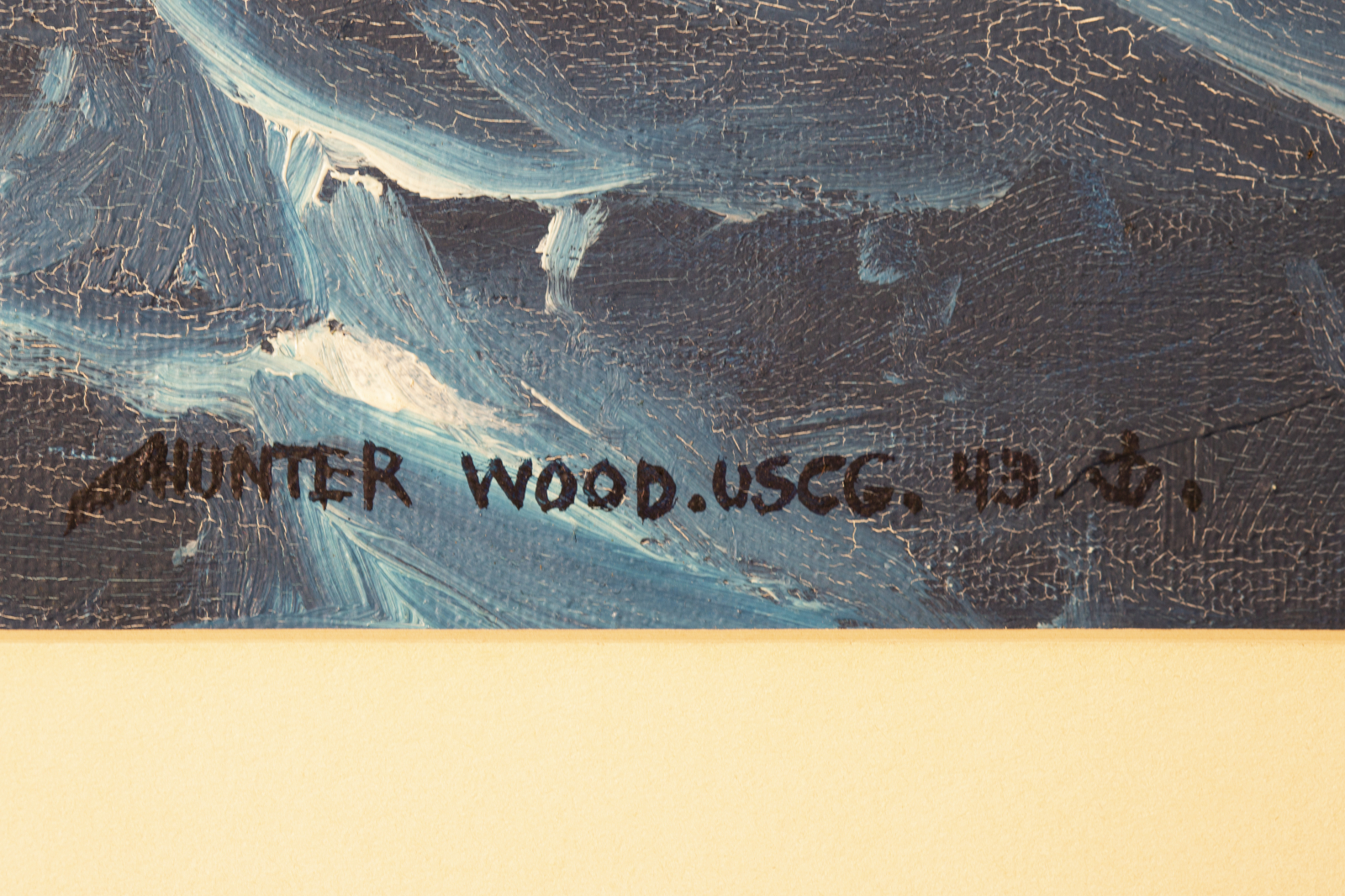
Tragically, Wood’s life was cut short and he passed away at the age of 39. His life was filled with highs and lows like the crests and troughs of a wave. There were times when he was the rescuer calling out, and others when he, himself was lost in the metaphorical waves. First and foremost, Hunter Wood considered himself a sailor.
Through his experience and technical knowledge of both sea and ships, he understood how the water could embrace you or break you, how weather could turn on a dime, and how the peaceful blue of the waves can morph into something terrifying.
Wood’s son shared with us family stories about how his father had a photographic memory which he used to accurately depict the minute detail of a situation in his works. It’s these details that help bring exceptional depth and verity to his paintings.
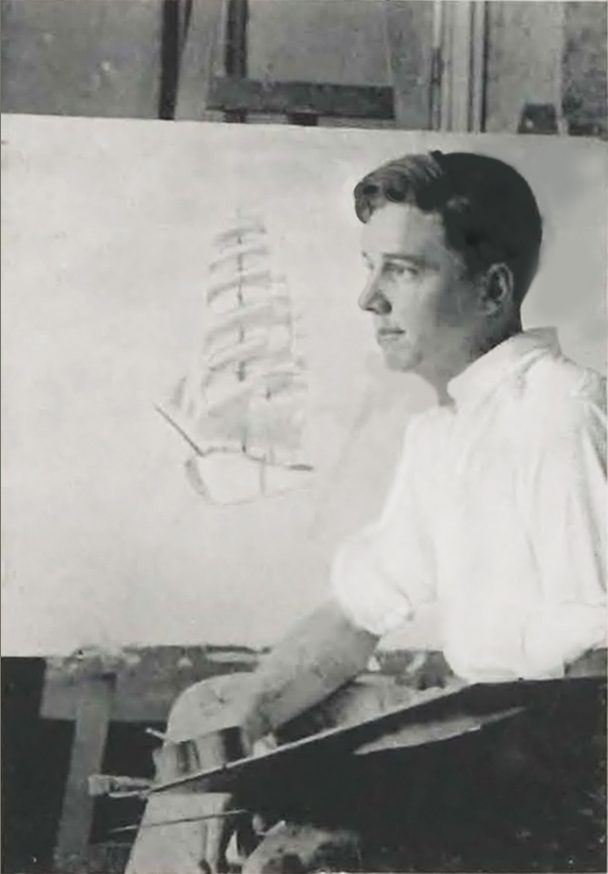
A Personal Encounter
Combined with the color and the perspective, Wood enables the viewer to experience this work as we choose – heroic, unsettling, or something more. Consciously or unconsciously, our life, our own personal crests and troughs shape the way we view this work. By allowing ourselves to open up to a work of art like this, the piece is then able to deepen for us, take on meaning perhaps far beyond the artist’s original intention. That raw experience between you and a work of art can be incredibly impactful.
The deep blue waters may be daunting, the eerie green haze of the sky – unsettling, the foamy white spray – caustic. But in this piece, Wood has not left us to succumb to these perilous waves. No, he’s sent rescuers.
They’re close, close enough for you to hear them shouting for you – “just hold on, help is on the way.”
Their boat breaks through those icy waves, just hold on. The storm will pass, the waves will calm.
An outstretched hand will reach out towards you, and lift you out of that stormy sea.
That blue will settle into tranquility once again.
Just hold on.
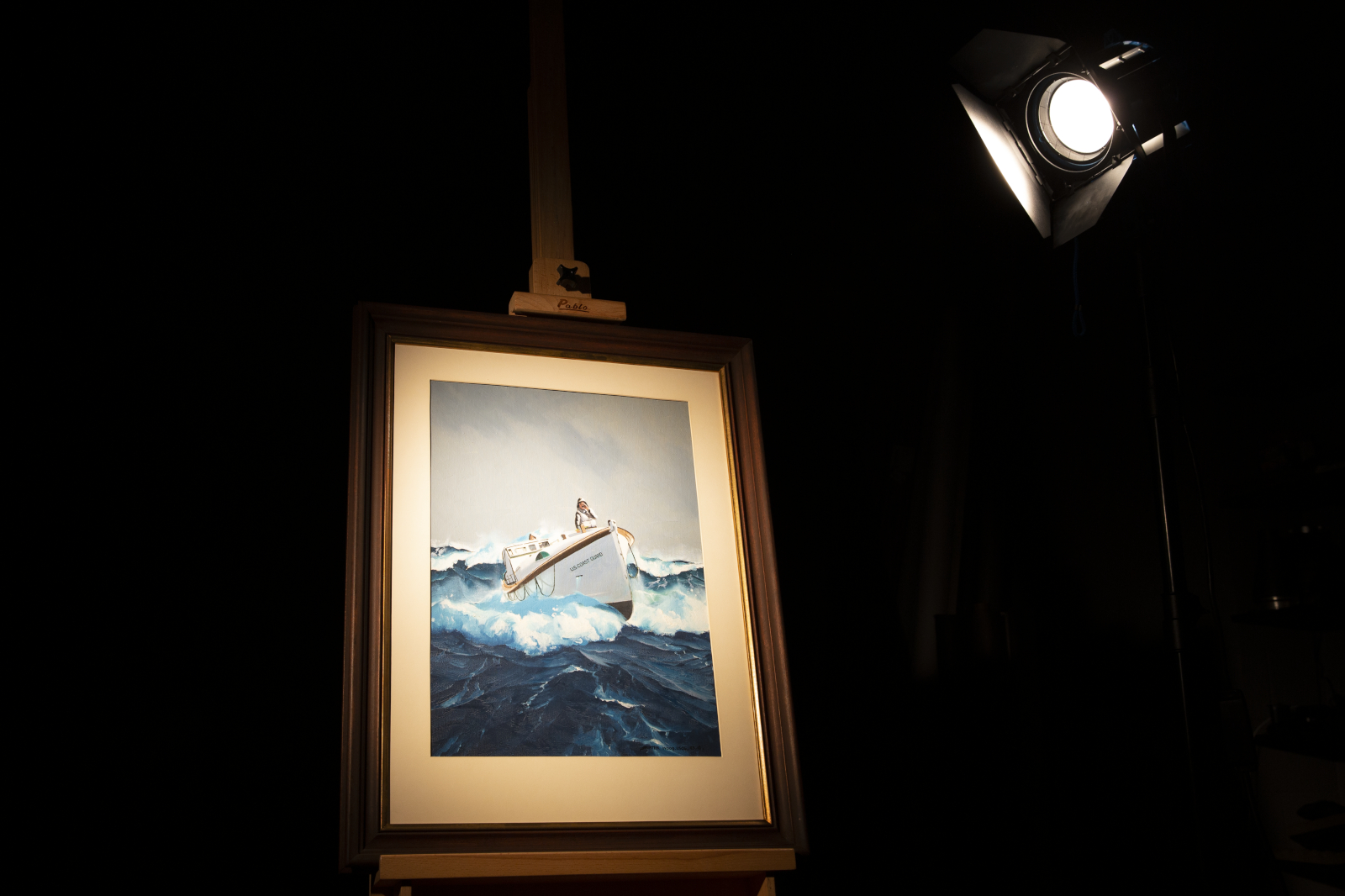
On a personal note:
I’ll be honest, my reaction to this work is very likely not what was ever intended by the artist. It’s possible that it’s also not the response that you or another person might have, and that’s okay. That’s the beauty of being vulnerable with a work of art.
I have had the strongest, most unexpected emotional reaction to this work. When I wrote about it “sticking in my head”, I meant it. This work kept me up at night even before I selected it for this episode – it was this reaction that actually led me to writing this one. I’ve struggled with depression several times in my life and it was my experience and struggle, I believe, that led me to this visceral reaction.
This piece was a difficult one for me to write. It’s hard being a creator – putting work out to the world and hoping that it is well received. So to then share this emotional piece and feel like I’m bearing my soul to the internet is, frankly, a little terrifying. But I felt I needed to.
So this episode is dedicated to those who struggle, to those lost in the waves. Just hold on.
Be sure to watch the full episode here and stay tuned for new episodes the first Friday of each month!